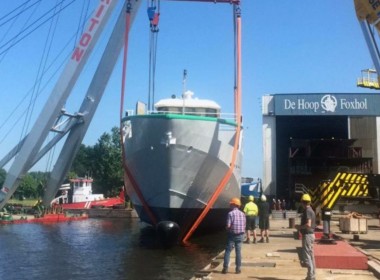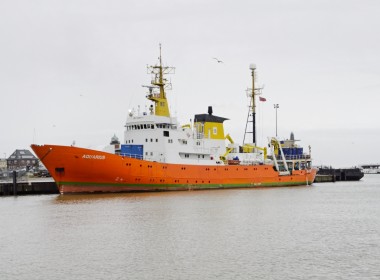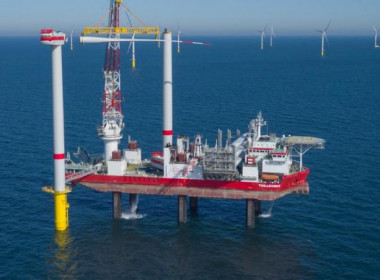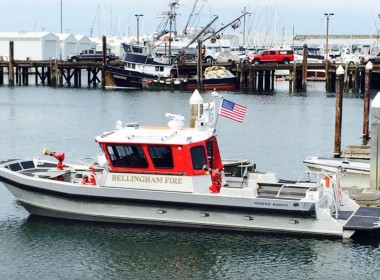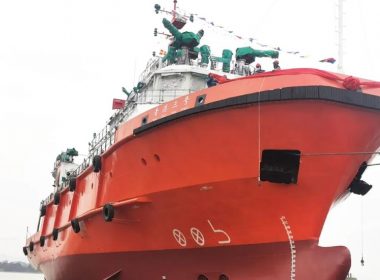VESSEL REVIEW | Heroinas de Salvora – Large emergency response vessel for Spanish sea rescue organisation

Spain’s Zamakona Yards has handed over a new large rescue vessel to Spanish maritime search and rescue (SAR) organisation Salvamento Maritimo.
Designed by Spanish naval architecture firm Seaplace, Heroinas de Salvora (“Heroines of Salvora”) has a length of 82.35 metres (270 feet), a beam of 18 metres (59 feet), a gross tonnage of 7,832, and accommodations for 16 crewmembers and 24 additional personnel, making it the largest vessel in the current active fleet of Salvamento Maritimo.
The vessel honours Cipriana Oujo Maneiro, Josefa Parada, and María Fernández Oujo. The three women, then aged only 24, 16 and 14, respectively, sailed out on a small boat and successfully rescued 58 of the 271 passengers and crew of the steamship Santa Isabel shortly after it sank just off Spain’s Salvora island on January 2, 1921.
Greater size for greater multi-role capability
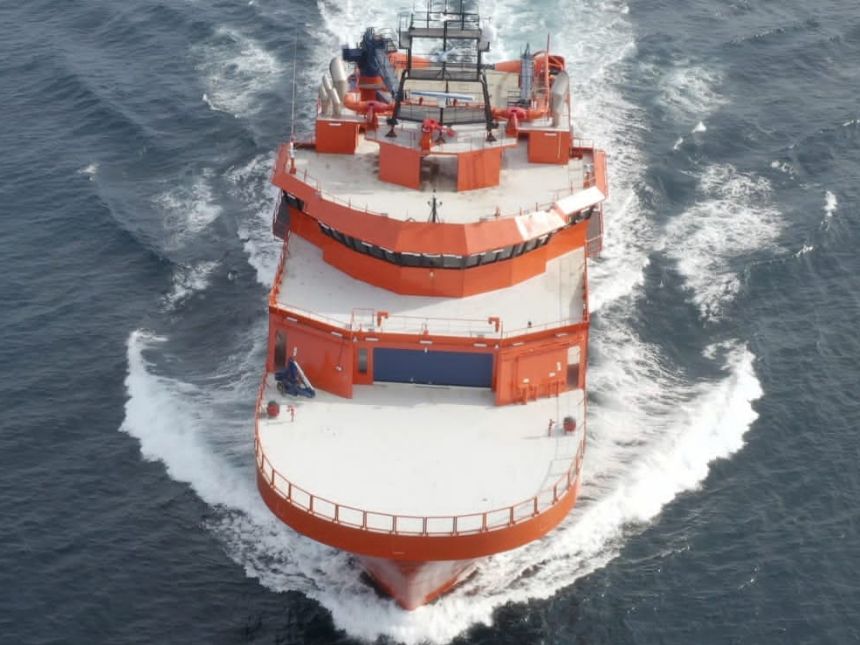
“It is specifically designed to be efficient and versatile in a multitude of operational modes,” Seaplace told Baird Maritime. “The vessel’s contemporary design allows for the operation and maintenance of drones, the collection of up to 1,800 cubic metres (63,566 cubic feet) of spilled oil, accessibility on both sides of the hull to assist shipwrecked individuals, and 213 tonnes (209.63 tons) of bollard pull for emergency assistance.”
The hull was designed to withstand extreme sea conditions and to allow the crew to operate safely despite the harsh surrounding environment.
Space was also allotted for two offshore cranes, a passive stabilisation tank, a DP2 system, a medical bay, and an area for housing rescued survivors in addition to 22 single cabins, two double cabins, and four quadruple cabins.
The vessel also needed to be capable of accommodating future growth through expansion and enhancement of existing equipment.
“As with other vessels in the Salvamento Maritimo fleet, it must be ready to assist in the event of a disaster. Given the circumstances, it is primarily in port in a standby capacity. In the event of an emergency, it must be able to respond promptly, start engines, and depart in less than 20 minutes.”
The designer clarified that because these occurrences are rare, the vessel can still be employed by supporting other operations or participating in training exercises and simulations for around 95 per cent of its projected service life.
A drone carrier for sea rescue duties
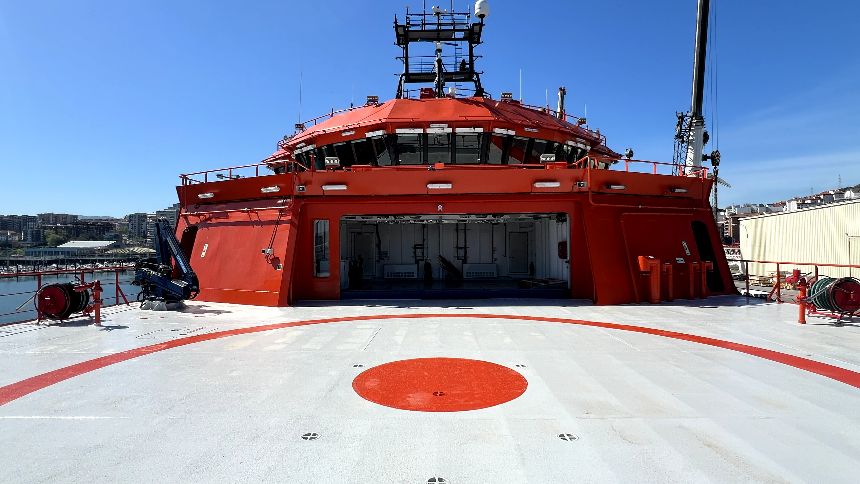
“The vessel is noteworthy for being able to deploy drones for maritime SAR, thus leading to a significant improvement in the operational capacity of the salvage operations. The uniqueness of drones lies in the fact that as they are unmanned, and so the existing regulations and guidelines lead to designs promising greater safety encompassing use of flight deck space as well as fuel handling.”
In Seaplace’s view, the challenge in the near future for designers and classification societies lies in defining a specific regulation for drones that takes into account the risks and needs that differentiate them from manned aircraft.
To ensure complete integration into the ship and optimal drone handling, a flight deck with the appropriate size and visibility has been provided for take-off and landing operations.
“Because the working deck at the stern is prepared for towing operations, the most suitable option is to have the flight deck at the bow, allowing visibility from the bridge without obstructing it. Also, since the drones are not going to be stowed outdoors, a hangar has been provided with direct access from the flight deck and from the clearance areas. This will permit maintenance as well as continuous communication with the bridge.”
In addition to being the stowage and maintenance area for two drones up to nine metres long each, the hangar also houses the main control station for handling the unmanned craft.
Enhanced versatility through a range of propulsion modes
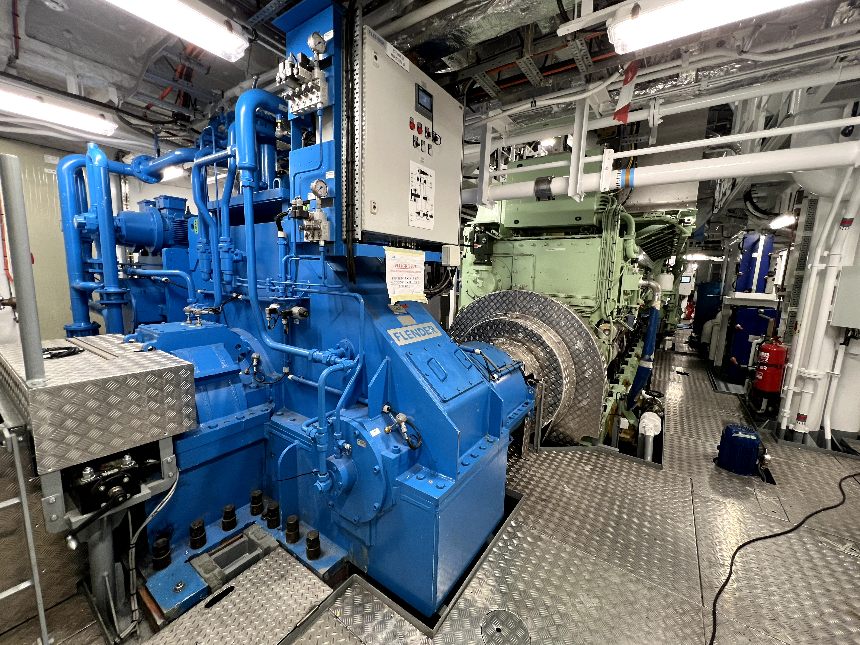
The vessel has a hybrid propulsion arrangement consisting of two Bergen 4,800kW (6,436hp) main diesel engines compliant with IMO Tier III requirements, three MAN 1,980kW auxiliary generators, four Kongsberg 900kW transverse thrusters placed two each at the bow and the stern, and two Kongsberg Promas rudders. The dual PTI/PTO configuration allows up to fifteen modes of operation including low-, medium-, high- and max-speed sailing as well as diesel and electrical DP2 modes. A shore power connection will enable the vessel’s onboard systems to continue operating while pierside without having to rely on the main engines or the generators.
The main engines can deliver the required 213 tonnes of bollard pull and a speed of 17.6 knots, though tests showed the bollard pull can peak at 240 tonnes (236 tons).
Seaplace explained that the integration of hybrid systems enables the vessel to adapt dynamically to varying sailing conditions, workloads, and speed requirements, thereby optimising its performance at all times. This enhanced responsiveness not only improves energy efficiency, but also contributes to more effective resource management and greater operational profitability.
“Salvamento Maritimo needed a new vessel with comparable characteristics and capacities to two earlier vessels but with a notable reduction in fuel consumption,” Seaplace told Baird Maritime. “This would result in significant OPEX savings and a noticeable reduction in the vessel’s carbon footprint along with other environmental emissions. We are pleased to report that the completed vessel exhibited a 25 per cent reduction in fuel consumption and CO2 emissions when compared to other vessels in the operator’s fleet.”
The designer added that the result of the concept proposal was a sustainable vessel that could adapt its consumption and emissions according to operation needs. This also necessitated the installation of a modern, complex integrated power management system that was not only capable of operating the vessel, but could also store any data required for facilitating preventive maintenance.
Full equipment suites for demanding emergency response missions
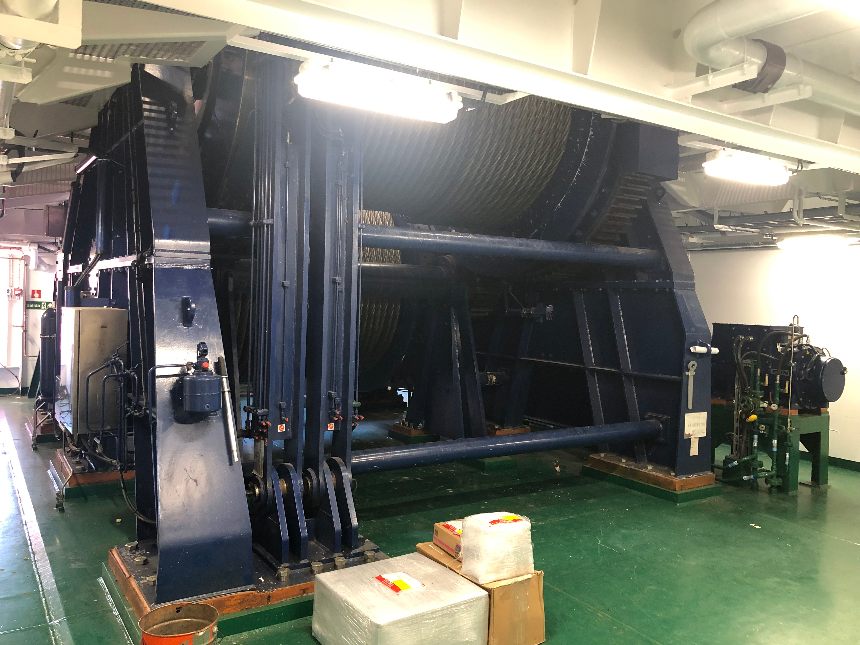
“Ensuring the design could perform a broad range of emergency response roles proved challenging, so there was a need to manage different projects simultaneously. On one hand, we needed to develop the hull and other features to ensure operability, while on the other, we also had to incorporate a hybrid setup in the power generation system. Finally, we also had to ensure the working deck was designed in a manner that would permit various functions to be effectively undertaken there.”
Seaplace said it overcame these issues via communication with the owner and the shipyard being continuous and dynamic. This proven design management process will therefore be applied in the company’s future vessel projects.
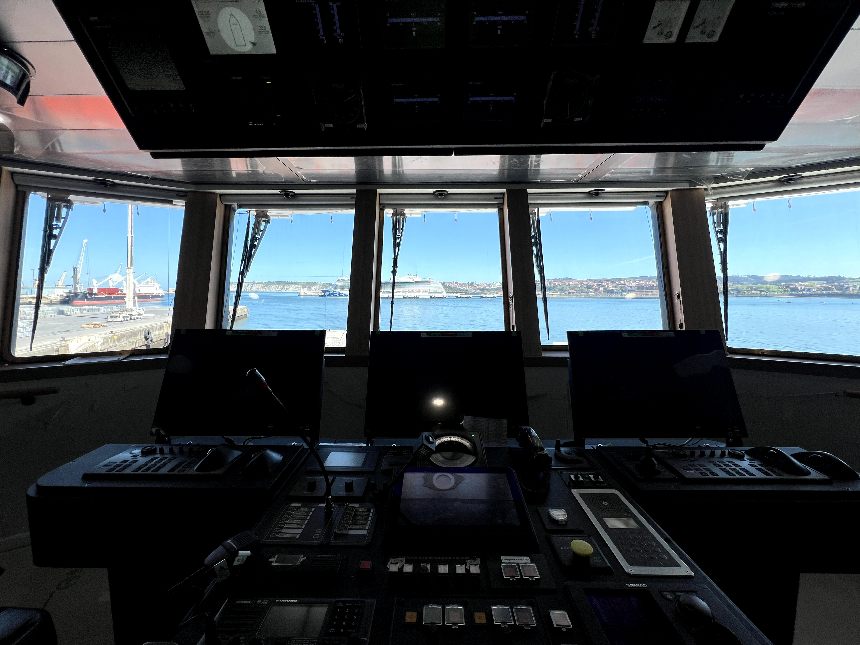
The electronics include an E-drive power supply system and electrical installation from Soling Instalaciones and a protection and energy management system from DEIF. The bridge navigation and communications systems main supplier was Redcai while the nautical equipment was supplied by Viking and the load calculator was provided by Marsys.
“The vessel has an Ibercisa 500-tonne towing winch and auxiliary equipment such as tugger winches, a towing hook, Ferri towing pop-up pins, and an Ibercisa stern roller,” Seaplace told Baird Maritime. “There are also two Melcal offshore cranes located on both sides of the vessel to cover the entire deck. The cranes are capable of performing deployment, transfer, lowering, and hoisting manoeures of the various pollution response equipment.
The designer added that the cranes can also move other items such as cargo containers, drifting objects, and submerged objects at depths not exceeding 90 metres. Each Melcal crane has a lifting capacity of 20 tonnes at 15 metres and five tonnes at 22 metres.
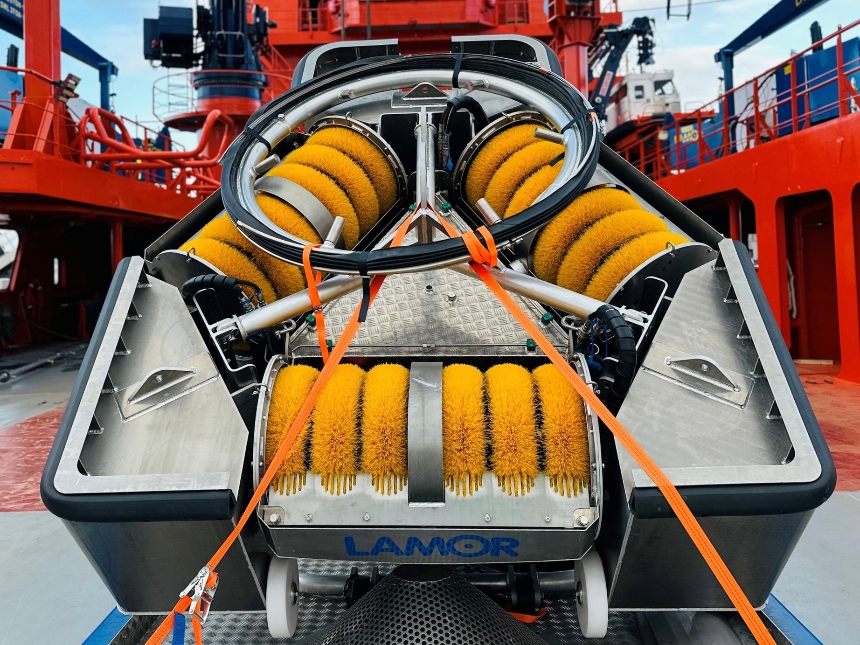
“There are also equipment and systems capable of collecting oil from the sea by means of extendable collection arms on both sides of the vessel. The package from Lamor includes two modular sweeping arms mounted on the deck and deployed on both sides to collect and pump the oil on board. A second oil spill recovery system consists of booms stowed on a reel as well as skimmers.
FFS was meanwhile selected to supply the FiFi2 system, which includes three monitors installed on top of the superstructure.
Heroinas de Salvora was designed in compliance to Bureau Veritas class rules.
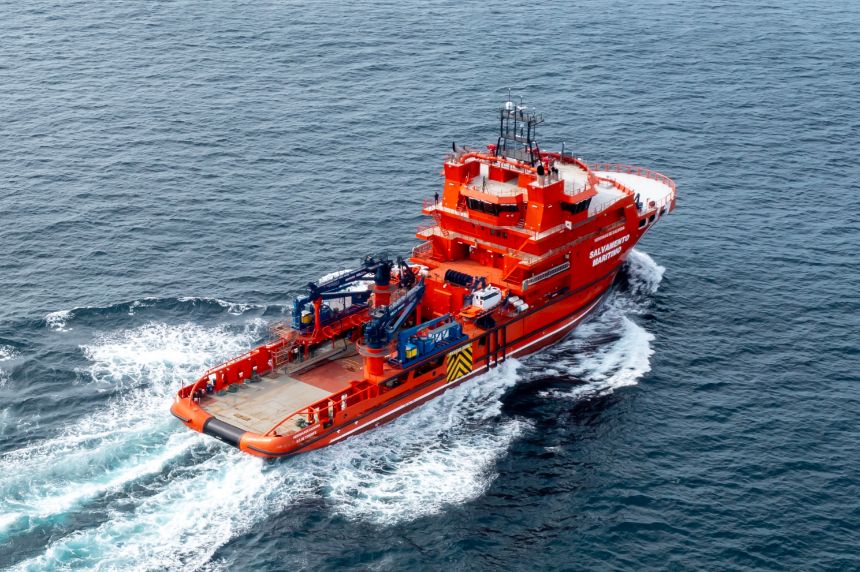

| Heroinas de Salvora | |
| SPECIFICATIONS | |
| Type of vessel: | Rescue and spill response vessel |
| Classification: | BV + HULL MACH, Oil recovery Tug Fire-fighting 2 water spraying SP42, COMF-NOISE 3 COMF-VIB 3, + AUT-UMS MON-SHAFT, CLEANSHIP + ALM, INWATERSURVEY, + DYNAPOS AM/AT R |
| Flag: | Spain |
| Owner: | Salvamento Maritimo, Spain |
| Designer: | Seaplace, Spain |
| Builder: | Zamakona Yards, Spain |
| Length overall: | 82.35 metres (270 feet) |
| Beam: | 18 metres (59 feet) |
| Draught: | 6.2 metres (20.3 feet) |
| Depth: | 8.0 metres (26.2 feet) |
| Gross tonnage: | 7,832 |
| Main engines: | 2 x Bergen, each 4,800 kW (6,436 hp) |
| Generators: | 3 x MAN, each 1,980 kW; 2 x 2,630 kW; 272 kW |
| Side thrusters: | 4 x Kongsberg |
| Rudders: | 2 x Kongsberg Promas |
| Maximum speed: | 17.6 knots |
| Bollard pull: | 213 tonnes (209.63 tons) |
| Dynamic positioning: | DP2 |
| Radios: | Redcai |
| Other electronics: | DEIF energy management system; Marsys load calculator; Viking; Soling Instalaciones power supply system |
| Winches: | Ibercisa |
| Cranes: | 2 x Melcal |
| Other deck equipment: | Ferri towing pins; Ibercisa stern roller |
| Other equipment installed: | Lamor sweeping arms; Lamor containment boom; Lamor skimmer; drone flight deck; hangar |
| Firefighting equipment: | 2 x FFS pumps; 2 x FFS foam/water monitors |
| Type of fuel: | Diesel |
| Fuel capacity: | 1,150 cubic metres (40,611 cubic feet) |
| Freshwater capacity: | 308 cubic metres (10,876 cubic feet) |
| Accommodation: | Medical bay; survivors’ area; 22 x single cabins; 2 x double cabins; 4 x quadruple cabins |
| Crew: | 16 |
| Passengers: | 24 |


